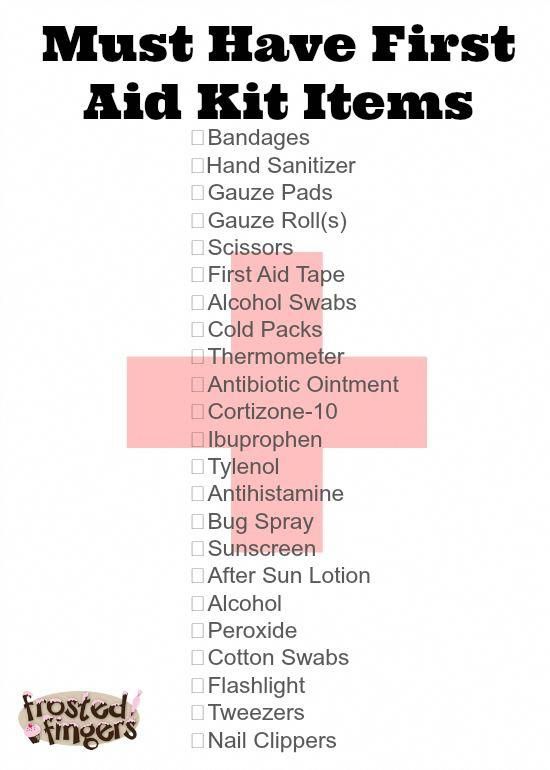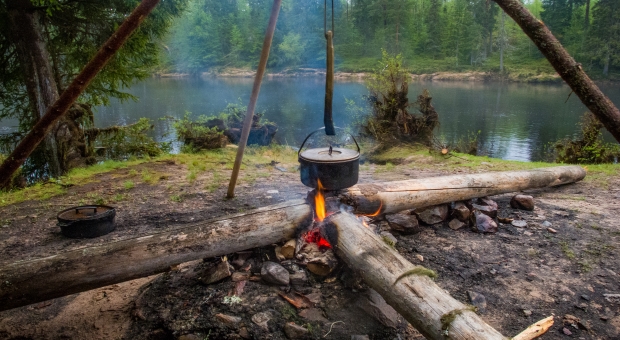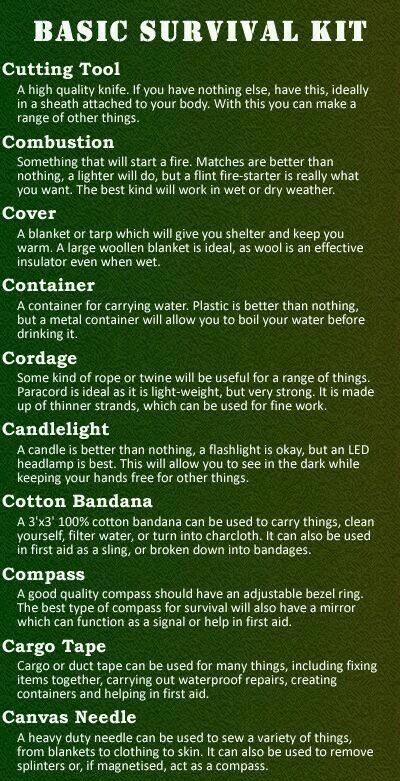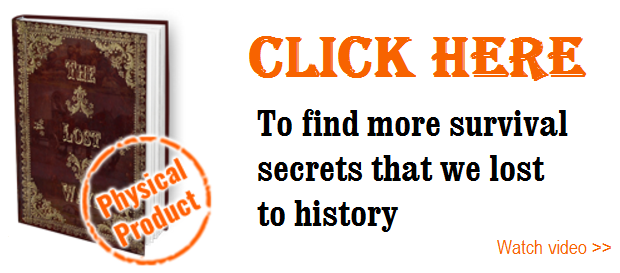Summertime activities are something we all enjoy; a day at the beach, hiking in the mountains, going on vacation.
No matter how you like to spend your summers, chances are that enjoying the great outdoors is part of it. But enjoying the great outdoors is not without its dangers. We preppers and survivalists tend to think in terms of surviving the big disasters. Yet every year there are people who die of personal disasters, just from being out in nature. From being caught in an undertow and washed out to getting lost in the mountains, every summer sees people whose “fun” turns into a life or death situation.
Find out the secrets that helped our fathers survive in the old days!
Being a survivalist doesn’t exempt us from these risky situations. They can strike us, just as well as they can strike anyone else. Whether or not they strike us isn’t the issue though. The issue is if we are prepared for them when they come.
It’s amazing how many preppers go on vacation from being who they are, when they go on vacation. It’s like they somehow think that problems can’t happen to them. Yet if there’s anything I’ve learned through the years, it’s that summer vacation, going for a day at the beach or taking a weekend to backpack in the mountains is much more likely to thrust any of us into a survival situation than the TEOTWAWKI event we all concern ourselves with.
Yes, prepare for those major disasters; but don’t stop there. Make sure you’re ready for the little disasters that can befall you too. Even if you’re just going for a picnic at the park, be sure to be prepared. That way, maybe you really can enjoy that picnic.
Always Tell Someone Your Plans
The number one rule for making sure that you make it home from your summertime activity is to make sure that someone knows your plans. Call a friend and let them know where you are going, what you are doing and when you expect to be back. Then, when you come back, let them know you made it.
That friend has one responsibility; that’s to let the authorities know if you don’t make it back on time. They should probably try and contact you first, just to make sure you didn’t forget to call, but that’s not the issue. The issue is that they raise the alarm that you didn’t make it back. So you’d better make sure that they know who to contact, not just that they need to make the call.
There is no way for emergency personnel and rescue teams to know that someone is missing, until it is reported. Most people don’t bother reporting until the person is gone for at least 48 hours, believing that’s what’s necessary for a missing person’s report. But this isn’t the same thing. This isn’t about reporting you missing to the local police. This is about informing rescue crews in the area you are going to, that there services are needed.
How quickly those rescue crews can start their search is important. The quicker they can, the greater a chance of finding the missing person before it’s too late. That can be especially critical if there is a chance of them getting wet just before sundown and suffering hypothermia.
I’ve been on search and rescue missions in the Colorado Rockies and speed is always of the essence. The faster those rescue crews find out that someone is missing, the sooner they can get to work.
Never go Under-dressed
There’s a real temptation in the summertime to dress as lightly as possible. That’s fine, as long as everything goes okay. But what if it doesn’t? More people die of hypothermia in the summertime, than you would ever believe. It doesn’t have to be cold for that to happen, it just has to be colder than your body’s core temperature of 98.6°F.
Typically, people who suffer from hypothermia in the summertime, do so because of falling in the water shortly before sunset. Being wet, their clothes don’t provide them with any insulation. Then, when the sun goes down and the temperature drops 20 or even 30 degrees, they start losing body heat quickly.
I can understand not wanting to wear a jacket when it’s hot out; but that doesn’t mean you shouldn’t carry it along. Put it in a day pack or tie it around your waist. Do something, just to make sure you’ve got it with you. Take along a dry change of clothing too, preferably in a waterproof bag. That way, if you do happen to fall in the water just before the sun goes down, at least you have dry clothing to put on.
Keep a Survival Kit On Hand
I don’t care where you go or what you do, you should always have a survival kit on hand. I’ve kept one in my cars for over 40 years now. Granted, it has changed through the years, gaining new items and getting heavier; but it’s still a survival kit. If I had to survive for a few days with what’s in that kit, I’d be fine.
When I go on a hike, that kit comes with me. Yeah, it’s a bit heavy; but it’s in a cross-body bag, so the weight is on one shoulder. That makes it easy to carry. Along with my normal EDC and a water bottle (metal, of course), I’m set for just about anything.
Notice I’m not carrying a survival kit in an Altoids tin or something the size of a paperback book. I carry a pretty complete survival kit in that EDC bag, with more survival gear that some people carry in their bug out bags. But then, I’ve been caught in the woods before, so I know the value of carrying that extra weight along with me.
That EDC bag or survival kit is useful for a whole lot more than just keeping me alive. It also has snacks, a water filter, fire starting gear a spork, and a rain poncho. So it’s really able to help me with a whole lot more than just surviving. Many of those items are useful for day-to-day needs, whether traveling in my car, walking in the woods or down on the beach.
Don’t Forget Custom Mods
There may very well be times when you need to modify your standard EDC kit or survival kit to meet the circumstances. Every activity has its own risks and you want to make sure that you are ready for them. That usually means taking something along, just in case.
I mentioned the risk of an undertow earlier. That’s a very real risk; one which has put my daughters in danger on one trip to the beach. They were about 150 yards out into the water when they got caught by it and couldn’t make their way back to shore. While both are strong swimmers, nobody is strong enough to fight against an undertow and win.
Here’s where the extra survival gear comes along. I had a large truck inner tube which I had brought along on the trip, even though I knew that none of the kids would use it. They had cooler inflatables to play with in the water. But that inner tube was stronger than them all.
Grabbing the inner tube, I was able to effect a rescue of my girls. With it to keep all three of us afloat, we just swam parallel to the beach, until we reached a place where there wasn’t any undertow and we could make it ashore. But if I hadn’t brought that inner tube along, we might have had some serious problems getting all three of us back home.
Take Extra Food, Water and Clothing
There was a time when I would make fun of how women packed for a trip. I’m sure you know what I mean; taking along lots more clothing than they need. But I’ve learned that they do that for a reason. Since none of us really know what’s going to happen, even on a well-planned trip, it makes sense to take what you might need, so that if you do need it, you’ll be prepared.
Now, I have to admit, I pack more like women do. I always have a couple of extra days worth of clothing along. Not only does that ensure I have the appropriate clothing for an unplanned activity, it also ensures that I have something to change into, if my clothing gets wet or dirty.
But that’s not all I make sure to keep with me. I’ve always got food and water in the car as well. I live in an area of the country where water can be a little scarce. It can also be a long ways between gas stations. So it’s easy to end up stranded, even in your car. Keeping food and water just makes sure that I can survive comfortably, should I end up stuck on the side of the road.
But That’s Not All
Speaking of being stuck on the side of the road, I’ve lost count as to how many times that’s happened to me through the years. I tend to drive old cars, which probably has something to do with it. No matter how well maintained I keep them, there’s always something that can go wrong.
That’s why I always keep emergency gear for the car as well, along with a fairly extensive tool kit. The biggest repair I’ve ever had to do on the side of the road was a head gasket replacement. Other than not having a torque wrench with me and needing a friendly passer-by to take me to buy parts, I had everything I needed to make that repair.
Speaking of That
Speaking of repairs, one never knows when there will be a problem which will cost a few bucks, even quite a few bucks. So it’s always a good idea to have some extra cash on hand. Credit and debit cards don’t always work, especially if the power is out or the phone lines are down.
I always keep a $100 dollar bill hidden away in my wallet. But when I’m traveling on vacation, I take a couple hundred more along in case. That money isn’t to spend, it’s my emergency fund. You just never know when you might need it.
Don’t Forget the First-aid Kit
One other thing that many people forget to pack along is a good first-aid kit. I’m not talking about a drugstore special here; but rather a good trauma kit. Adhesive bandages are great for a paper cut or a scraped knee, but they won’t do you much good for any sort of major injury.
Being able to apply first-aid in the event that a family member suffers a major injury is critical to ensuring their survival. I’ve heard emergency room doctors say that the paramedics who bring in their patients do more to save lives, than the doctors who treat the patients. That’s true, to a large extent, because it is the first-aid that is applied, which ensures that the patient gets to the emergency room alive, before it is too late.
This need is compounded by the fact that many summertime activities can put you out in the country, where hospital emergency rooms are a long ways away. Proper first-aid for major injuries is essential at this point, to stabilize the patient and transport them to help.
Your first-aid kit needs to be ready to take care of:
- Shock
- Major bleeding injuries to any part of the body
- Puncture wounds, including to the chest and abdomen
- Broken bones
Not only does your kit need to be ready for those; but you do too. Invest the time necessary to take a Red Cross first-aid course or something offered by your local hospital. The more you know about would care and first-aid, the better a chance that you’ll be able to save someone’s life. That someone could very well be a member of your own family.







































































I love in California,so I carry water filter and water bladder along with the things that you mention ed